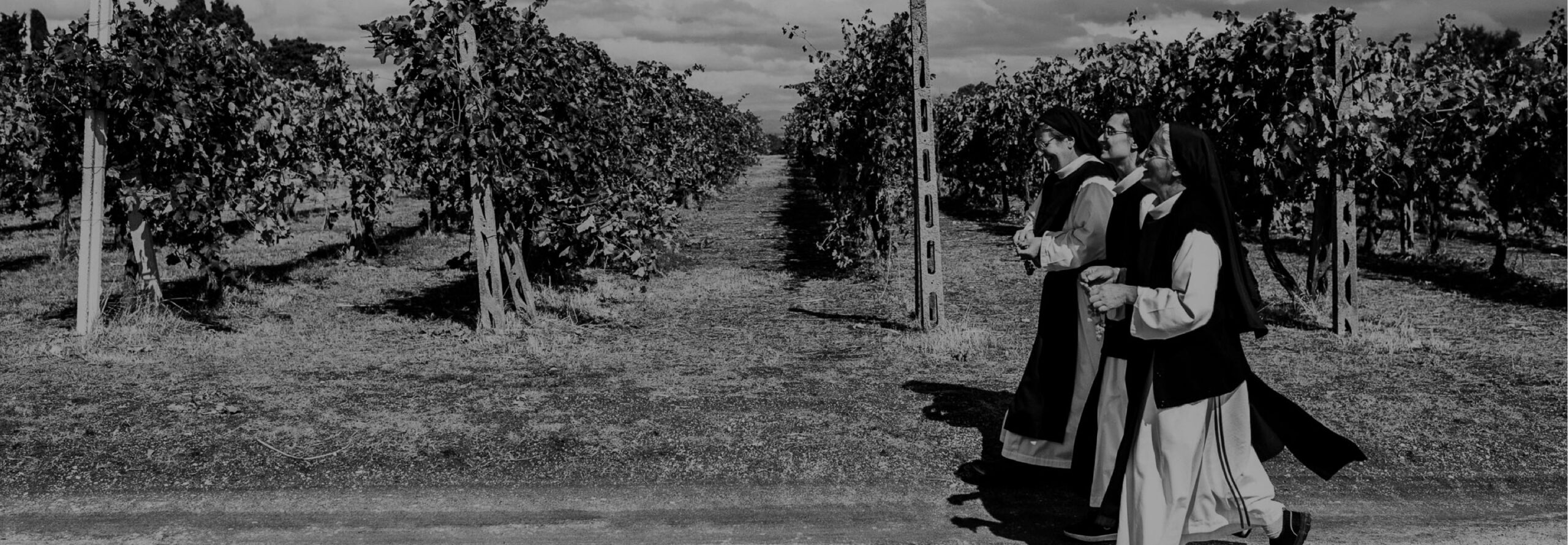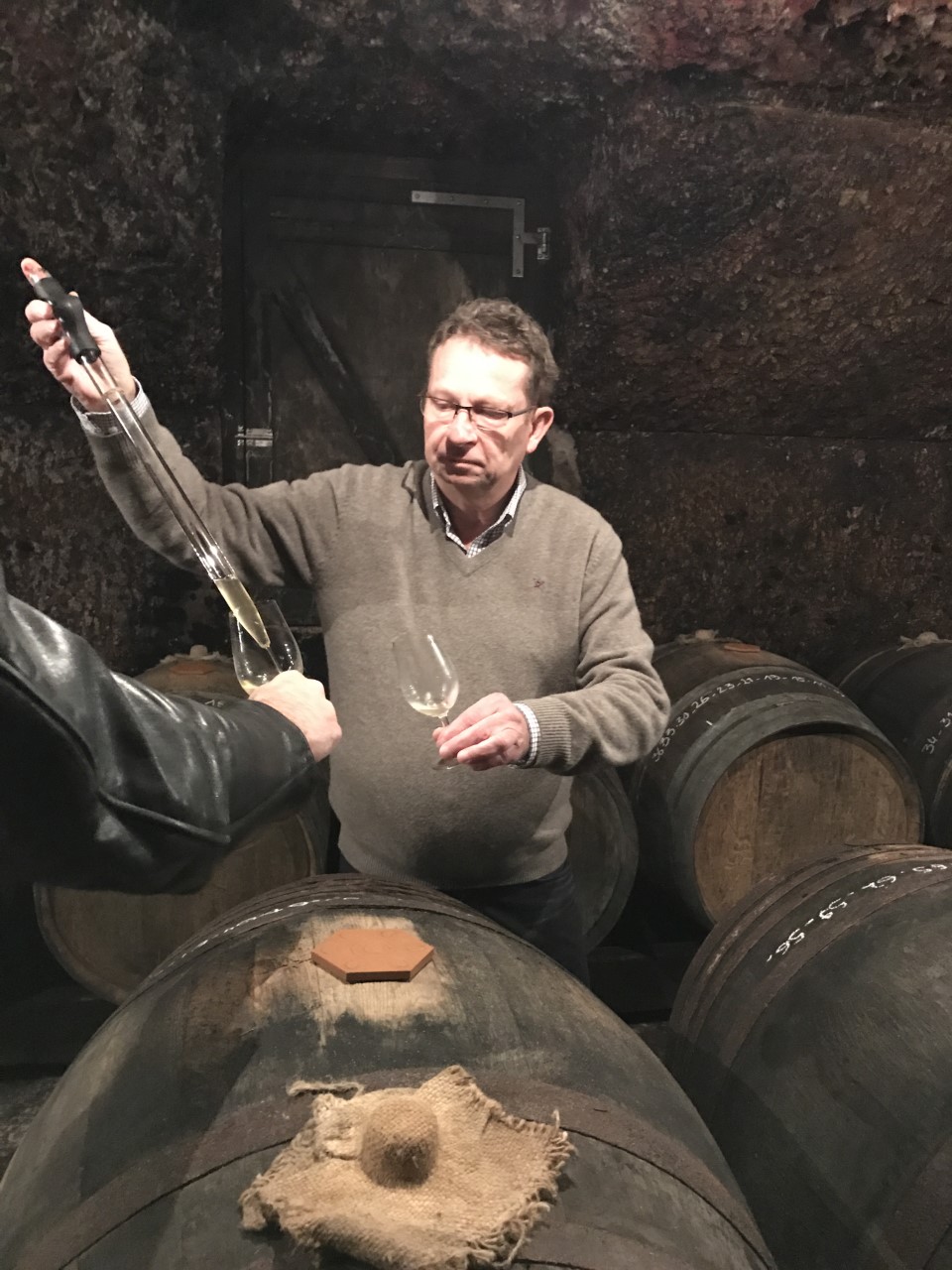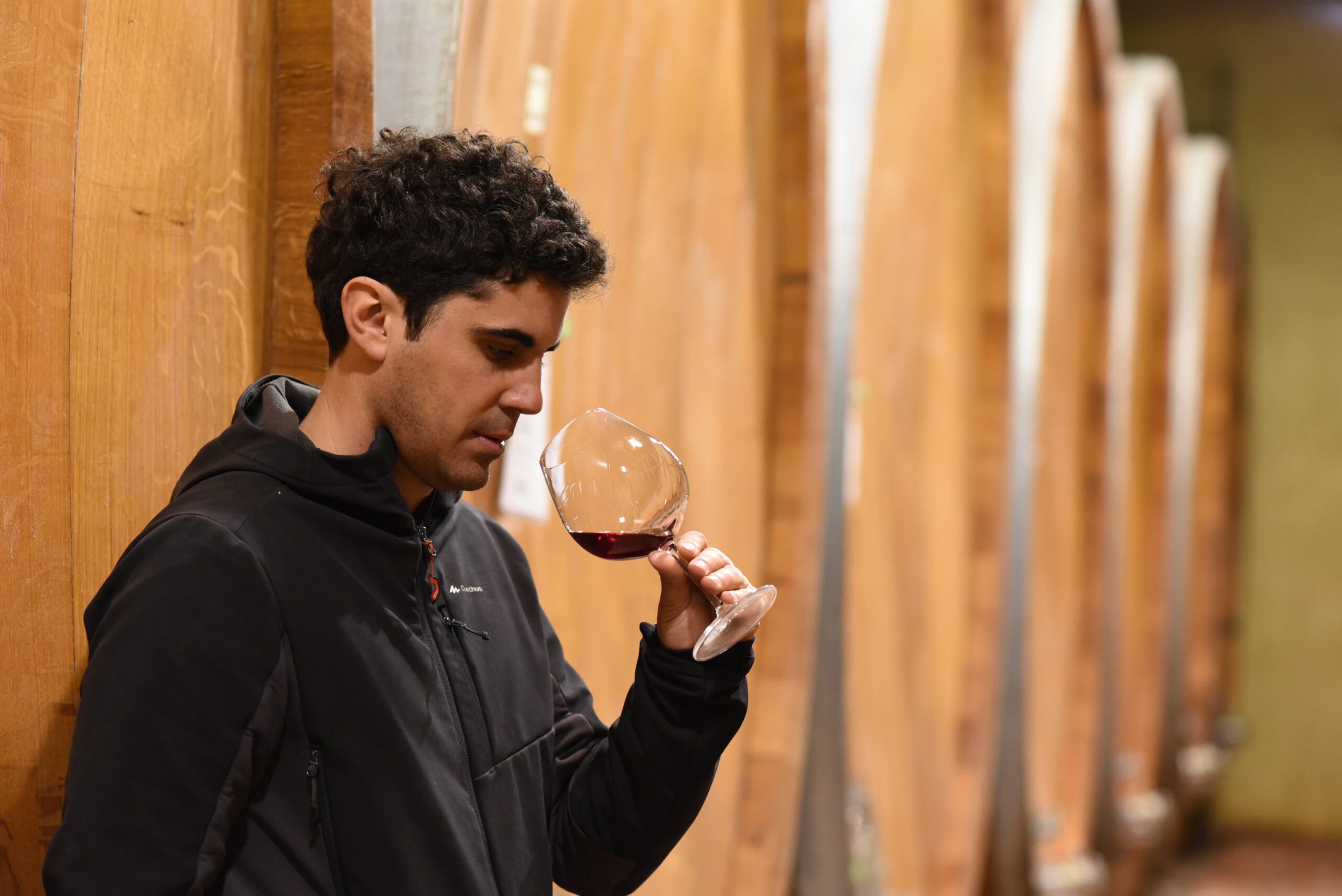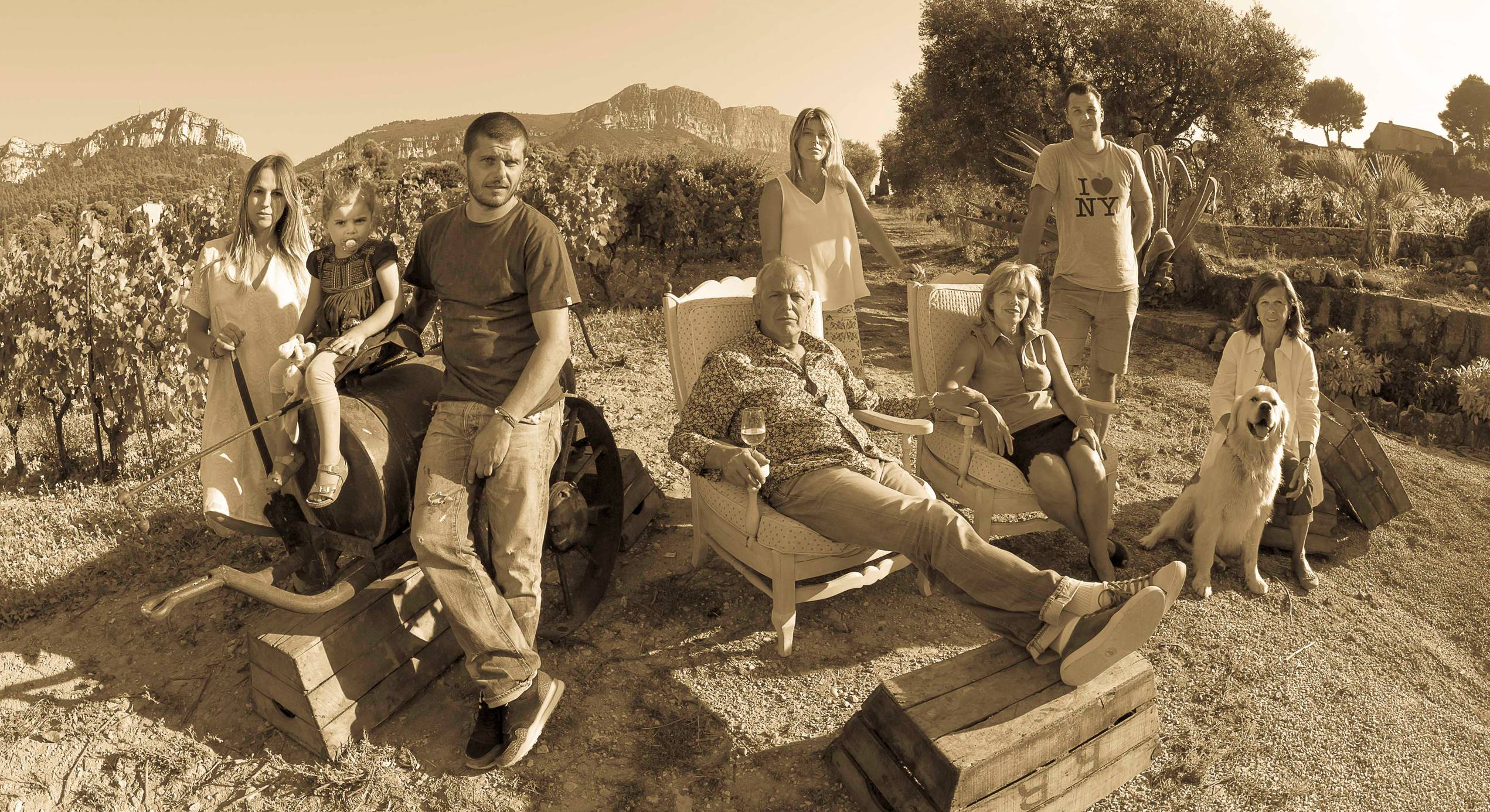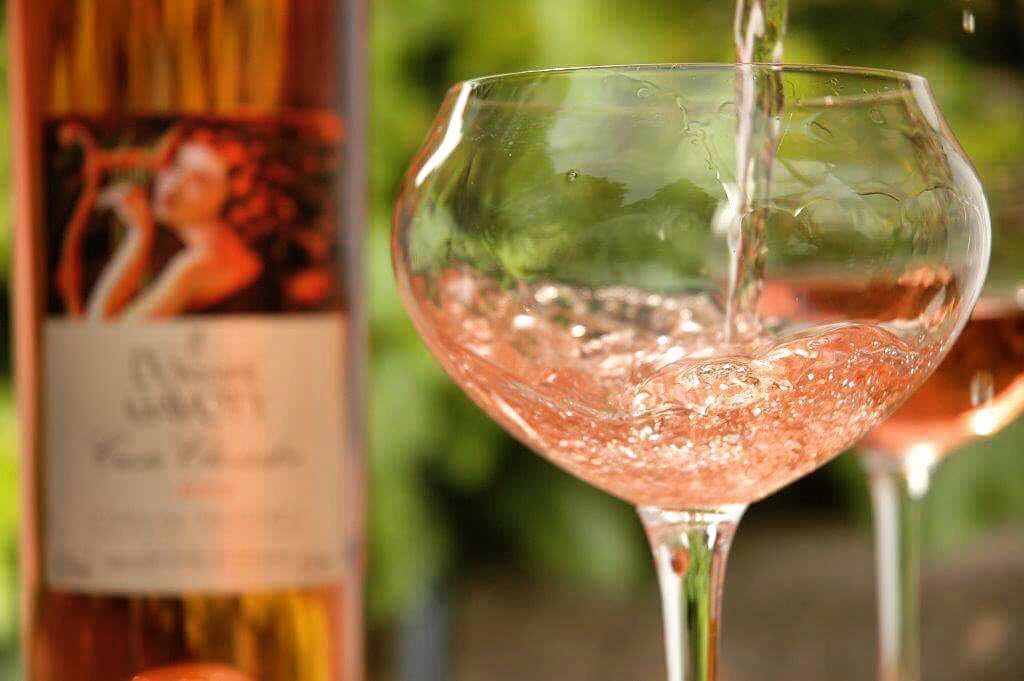
In Bandol, Etienne Portalis of Château Pradeaux reported his earliest harvest ever in 2022 (September 7th to September 24th), yet his rosés in ’22 are higher in acidity than either 2020 or 2019. Domaine du Bagnol in Cassis reported a similarly scorching-hot and dry growing season, with only 250 milliliters of rain for all of calendar year 2022, but their rosé ended up fresher and saltier than the 2020 and the 2019. In the seaside Côtes de Provence sub-appellation of La Londe, Château Les Mesclances produced rosés of modest alcohol (between 12.5% and 13%), partly due to the season’s intense drought blocking maturity for a spell during August—a widespread phenomenon across the south of France. And, further inland, Domaine Gavoty in Cabasse witnessed similarly extreme conditions, with an average temperature exceeding that of 2020, and harvest taking place earlier than ever before.
Mas de Valériole
The Camargue is renowned for its distinctive agricultural products: salt, from vast marshes that hug the Mediterranean; varyingly hued and deeply nutty wild rice; and, of course, wine. Just ten miles due south of Arles, the Michel family stewards the lovely Mas de Valériole, a 45-hectare estate founded in the early 15th century and purchased by the Michels in the late 1950s. Around the turn of the century, brothers Jean-Paul and Patrick Michel focused their energies on improving the estate’s wines, adopting organic viticultural practices in 2006 (certified today) and refining their approach in the cellar—a process which continues today through their children, who are slowly assuming day-to-day responsibilities here. Mas de Valériole’s vineyards, which today comprise 32 of their 45 hectares, encompass a variety of soil types: sand, clay, limestone, and alluvial loam deposited by the Grand Rhône. Steady wind from the Mediterranean mitigates the Provence heat, facilitating their chemical-free approach to farming and ensuring modest alcohol levels for the wines. Produced from a variety of cépages, including Cabernet Sauvignon and Merlot, plus crossings like Caladoc (Grenache and Malbec) and Marselan (Grenache and Cabernet Sauvignon) which are particularly well-suited to the Camargue’s climate, Mas de Valériole’s wines combine the breezy freshness one expects from Provence with a sense of wildness and an underlying salinity that is very Camarguais.
2022 “Vé” Rosé IGP Mediterranée

“Vé”—a local Provençal expression meaning “Look at that!”—is a blend of 80% Caladoc (a crossing of Grenache and Malbec) and 20% Merlot, from soils of sand and loam, pressed directly without maceration. Clocking in at a modest level of alcohol, it offers bright, salt-tinged flavors of raspberry and ripe citrus fruits, with a sneakily long finish given its modest price.
2022 “Grand Mar” Rosé IGP Bouches-du-Rhône – Terre de Camargue

“Grand Mar” is pure Caladoc, a crossing of Grenache and Malbec which is particularly well-suited to the deep south of France, given its resistance to coulure (uneven flowering). With four hours of maceration at pressing, it is more assertive in its fruit character, with a more penetrating impression of minerality on the palate. While no heavier than the “Vé”, it is both finer and longer, with an overall sense of poise marrying nicely to its boisterous fruit.
Château Les Mesclances
“Mesclances” is Provençal for a confluence of rivers, and this beautiful 30-hectare domaine, situated a mere three kilometers from the Mediterranean Sea in the commune of La Crau, is flanked by two streams and surrounded by thick forests. Helmed today by Arnaud de Villeneuve Bargemon, whose family has owned the property since before the French Revolution, Mesclances produces wines of great purity and expressiveness, and without the use of synthetic chemicals (certified organic as of 2020 but practicing for significantly longer). The geography of the estate dictates the various appellations found on the labels: vines in the plain below the slope are classified as IGP Méditerranée; the foot of the south-facing slope yields AOP Côtes de Provence, and the steeper incline of the hill carries the rare appellation Côtes de Provence La Londe, which carries a high concentration of schist content in the soil. A mere 20 estates count La Londe in their holdings, as the appellation extends across eight villages in the immediate area.
2022 “Charmes” IGP Méditerranée Rosé
Sourced from the vines abutting the two streams that intersect on the estate, “Charmes” is comprised of Grenache, Cinsault, Syrah and Tibouren planted in alluvial soils. Pressed shortly after harvest with minimal skin contact, its pale color and bright acid make for an effortlessly drinkable wine. This vintage is notably lighter in color and brighter in profile than its 2021 counterpart, as the 2021 included no Tibouren (which suffered during the season) whereas this 2022 contains 20% of this high-acid, low-pigment variety.
2022 “Romane” Côtes de Provence Rosé

From 20-year-old vines planted in alluvial soils at the base of the hill overlooking the estate, “Romane” is made up of 60% Grenache, 30% Cinsault, and 10% Mourvèdre, the last of which provides notes of appetizing bitterness and salinity which lend structure to the wine. The Grenache and Cinsault here are macerated for six to nine hours before pressing, and the Mourvèdre is pressed directly, resulting in a wine that deftly combines breeziness and vinosity.
2022 “Saint Honorat” Côtes de Provence Rosé

Sourced from a mid-slope parcel that was the original source of grapes at the estate generations ago, “Saint Honorat”—named after a bishop who blessed these vineyards during a long-ago pilgrimage—is a spontaneously fermented blend of primarily Grenache and Cinsault, with a touch of Mourvèdre, from vines averaging 35 years of age. With six to nine hours of maceration for the Grenache and Cinsault, this wine leans towards a more vinous and serious style, although it displays admirable lift and brightness.
2022 “Faustine” Côtes de Provence La Londe Rosé

The most serious and age-worthy rosé in the Mesclances cellar, “Faustine”—named after proprietor Arnaud’s daughter—blends 90% Grenache and 10% Mourvèdre from the blue-schist soils of the special La Londe sub-appellation. This cuvée ferments spontaneously, with the Grenache given 15 hours of maceration and the Mourvèdre derived from saignée, and with malolactic fermentation occurring for a portion of the final blend. While it offers plenty of fresh acidity and excellent drive, Faustine offers power, structure, and vinosity, with a punchy underlying minerality.
Domaine Gavoty
Domaine Gavoty, run today by Roselyn Gavoty—the eighth generation of Gavoty to helm her family’s domaine since her ancestor Philémon acquired it in 1806—encompasses 50 hectares of vines on a Roman-era farm in the commune of Cabasse called Campdumy (“harvest fields” in old Provençal), situated along the snaking Issole River in the northwestern sector of the Côtes de Provence appellation. Surrounded by oak and pine forests and bordered by the Issole, Gavoty is a polycultural farm encompassing 110 hectares in total, and the family has worked the land without synthetic chemicals for decades, obtaining organic certification in recent years. Whereas much currently trendy Provence rosé gets by on being light enough in color and innocuous enough in flavor, Gavoty’s are first and foremost wines—refreshing in spirit as befits the appellation, to be sure, but resonant and thought-provoking as well, with notably gorgeous textures. In fact, Roselyn considers texture to be the most important element in great Côtes de Provence rosé, and her wines hit bullseyes in that department. A lot of rosés dash quickly down the throat, sprinkling a few candied red fruits along the way; Gavoty’s caress the palate, with rich but nimble fruit fused to an underlying salinity, and finishes that blossom and linger. This is the kind of rosé that ignited interest in the appellation in the first place, and it is the kind that we at Rosenthal Wine Merchant fell in love with 40 years ago during our earliest importing adventures.
2022 “La Cigale” Vin de Pays du Var Rosé
Twenty of Gavoty’s 50 hectares of vines are classified as Vin de Pays du Var, as they are situated on flatter land than the slopes used for their Côtes de Provence cuvées. Built around roughly equal proportions of Grenache and Cinsault, with a small amount of Carignan and a splash of Syrah, “La Cigale” (named for the ubiquitous cicadas that populate the region) is charmingly juicy yet salty and dry, with nice length for a wine of its modest appellation. Furthermore, its adamantly non-confected flavor profile sets it apart from the herd of similarly priced Provence rosés.
2022 “Récital” Côtes de Provence Rosé

Roselyn’s grandfather Bernard Gavoty (1906-1980) was a renowned classical music critic for France’s newspaper Le Figaro, and the name of this cuvée pays homage to the importance of music in the family’s history. Comprising 45% each Grenache and Syrah, plus around 10% Carignan, and produced via direct pressing, “Récital” delivers the ethereal color, lip-smacking salinity, and bright fruits one expects from the appellation, but with a sumptuousness of texture and a swelling, clinging finish that is all Gavoty. It offers spectacular value, as well as notable personality for its category.
2022 “Grand Classique” Côtes de Provence Rosé

Gavoty’s “Grand Classique” combines Grenache and Cinsault in roughly equal proportions, with Carignan playing a minor role which varies based on the vintage’s character. Rather than being pressed immediately after harvest by rote as many Provence rosés are, “Grand Classique”—as well as “Clarendon” below—macerates for several hours before pressing, and the saignée and first-press juice are vinified separately. This allows Roselyn the flexibility to blend the more succulent and tender saignée with the more angular and architectural press juice in a manner to achieve the precise textural qualities she seeks in her wines. “Grand Classique” displays an uncanny equilibrium, with racy acidity wed to gleaming fruits that are just the right amount of vinous, all buttressed by a mouthwatering texture that speaks both to domaine’s healthy fruit and to Roselyn’s consummate blending skills.
2022 “Clarendon” Côtes de Provence Rosé
Bernard Gavoty, in his articles for Le Figaro, often wrote under the curious Anglophone pseudonym Clarendon, and this cuvée—produced from the domaine’s oldest Grenache, Syrah, and Carignan vines (dating back to the early 1960s)—honors his memory. Like the “Grand Classique” above, “Clarendon” combines a touch of saignée with the juice from the first pressing, striking a wonderful balance between vinosity and brisk drinkability. Both nose and palate are multilayered and beguiling, and although the fruit is brightly kinetic, there is a sense of regal richness to this cuvée that has nothing to do with weight. “Clarendon” sits easily alongside the Bandol from Château Pradeaux or the Palette from Château Simone as a rosé that is flattered by a bit of bottle age.
Domaine du Bagnol
2022 Cassis Rosé

The idyllic seaside town of Cassis is justly celebrated as a vacation destination, but its wines are arguably the most finesse-driven examples of Provence rosé in the entire region; however, with only ten producers overall, the appellation is hugely underappreciated. No producer expresses the salt-kissed limestone-driven beauty of this terroir like Domaine du Bagnol, and the current generation Sébastien Genovesi has steered operations toward the fully organic (certified since 2014), crafting a rosé of scintillating energy, chiseled calcareous musculature, and gleaming red fruits. Comprising 45% Grenache, 35% Cinsault, and 20% Mourvèdre, Bagnol’s Cassis Rosé is pressed directly and rapidly (in under two hours) to extract as little color as possible, and less than 10 milligrams per liter of sulfur are added to the wine—a factor which contributes to its gorgeous purity of texture and intense evocation of limestone.
Château Pradeaux
This singular domaine, whose holdings are the closest to the Mediterranean Sea in the entire appellation, has been in the Portalis family for nine generations, and they are the absolute standard-bearer for ultra-traditional and uncompromising Bandol. From his family’s organically tended old vines—most of which were planted during World War II—Etienne Portalis produces rosé of visceral potency, eschewing the market-minded politeness of many growers in the region and crafting wines of sumptuous concentration, intense structure, and staggeringly powerful minerality. He embraces the risk of spontaneous fermentation—almost unheard of in rosé production in Provence—and employs cement and large oak as well as the industry-standard stainless steel for his age-worthy pink wines.
2022 Côtes de Provence Rosé

Pradeaux’s Côtes de Provence Rosé comprises 50% Cinsault, 40% Mourvèdre, and 10% Grenache, from vines just behind the family home with an average vine age of 40 years. Relatively serious and strapping, it drinks like a baby Bandol Rosé, offering a penetrating chalky minerality, robust red fruits, and a whisper of tannin that contributes to a particularly long and clinging finish.
2022 Bandol Rosé

The magnificent and iconic Bandol Rosé from Château Pradeaux is a cornerstone of our portfolio, comprising 80% Mourvèdre and 20% Cinsault from vines up to 80 years old. Fermented spontaneously and aged on its fine lees in a combination of steel and cement, it is both structured and fine, with spice-laden fruit and a depth which very few rosés attain—even in this hallowed appellation.
2021 Bandol Rosé “Vesprée”

“Vesprée” represents a tiny portion of Pradeaux’s Bandol Rosé production, selected at harvest for its quality, and vinified and aged in in cement egg. [From the 2021 harvest on, Etienne has ceased using oak on this cuvée.] Aged six months longer on its lees before bottling than the basic Bandol Rosé, “Vesprée” is always released one year later (hence the 2021 vintage in this offering), and it will age effortlessly for years to come. It is a wine full of energy, with deeper color and a more marked sense of herb-tinged earth on its densely concentrated frame.
Related
